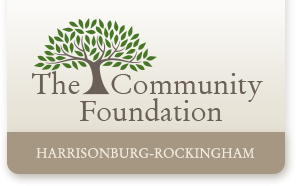Gifts of appreciated stock: Let the numbers do the talking
Gifts of appreciated stock: Let the numbers do the talking
No matter how frequently you remind clients to pause before they automatically reach for the checkbook to make their charitable gifts, many clients still give cash! As an attorney, accountant, or financial advisor, you are well aware that giving long-term appreciated assets is often one of the most tax-savvy ways your clients can support their favorite charities. Nevertheless, it’s sometimes hard to convey that message to clients with words that stick. Next time, consider using illustrations to help clients see the benefits.
Below are three simple examples* to help you show your clients the benefits of giving appreciated stock.
Sally and Bob Jones give $100,000
Sally and Bob Jones plan to give $100,000 to their donor-advised fund at The Community Foundation to organize all of their giving for the calendar year. Let’s assume Sally and Bob have a combined adjusted gross income of $600,000, which lands them in the 35% federal income tax bracket. If they gave $100,000 in cash to their donor-advised fund, they could realize an income tax savings, potentially, of $35,000.
What if instead of giving cash, Sally and Bob gave highly-appreciated, publicly-traded stock, valued currently at $100,000, to their donor-advised fund. Let’s assume they’ve been holding the stock for many years, and the shares have a cost basis of $20,000. Not only are Sally and Bob eligible for a potential income tax deduction that will save them up to $35,000, but they have also potentially avoided $12,000 of capital gains tax that they would have owed if they’d sold the stock (using a long-term capital gains tax rate of 15%). So, it’s easy to see why Sally and Bob should consider giving highly-appreciated stock instead of cash.
Jenny and Joe Smith give $1 million
Jenny and Joe Smith plan to give $1 million to community causes this year. They’ll do that by adding $500,000 to their donor-advised fund at The Community Foundation, which in turn they will use to support their favorite charities. They’ll also be making a $500,000 gift to an unrestricted fund at The Community Foundation to help address the region’s greatest needs for generations to come. Let’s assume that Jenny and Joe are in the highest federal income tax bracket because they earn multiple seven figures. If they were to give $1 million in cash, they could save, potentially, up to $370,000 in income tax. If they gave publicly-traded stock instead of cash, assuming a $200,000 cost basis in stock valued currently at $1 million, they would still potentially save up to $370,000 in income tax, and they would also potentially avoid $160,000 in capital gains tax (based on a long-term capital gains tax rate of 20%).
Tiffany and Brett Thomas give $5 million
Tiffany and Brett Thomas plan to give a target amount of $5 million to charity as the cornerstone of their overall philanthropy plan. They would like to use publicly-traded stock that they’ve held for many years, valued currently at $5 million. They would love to receive a lifetime income stream from these assets, so that the remaining assets will flow to their fund at The Community Foundation after their deaths. In this case, you’ll explore setting up a charitable remainder trust that pays out an income stream to Tiffany and Brett while they are both living and then to the survivor for the survivor’s lifetime.
Let’s assume that TIffany and Brett are both 55 years old. And let’s assume that the stock has a very low cost basis–just $500,000–because the Thomases have held it for so long. Depending on the IRS’s applicable rates, and assuming a 5% annual payout rate paid at the end of each quarter, here’s an approximate tax result if you worked with The Community Foundation to help Tiffany and Brett establish a charitable remainder trust:
–$1,042,550 approximate potential income tax deduction based on the present value of the gift of the remainder interest to charity
–$4,500,000 in capital gains that may not be subject to tax
–$250,000 in total payments during the first year
–Annual payments of 5% of the value of the assets in the trust, which means the income stream will fluctuate depending on the value of the assets
Following the death of the survivor of Tiffany and Brett, the remaining assets will flow to the Thomas Family Fund at The Community Foundation, which Tiffany and Brett have already established and which, upon their deaths, will split equally into two funds. The first fund will be a donor-advised fund for which their children will serve as advisors, and the second fund is an unrestricted endowment fund to support The Community Foundation’s priority initiatives in perpetuity.
Of course, no client’s circumstances will exactly match those of Sally and Bob, Jenny and Joe, or Tiffany and Brett. The net-net here, though, is that The Community Foundation is happy to discuss the various tax-savvy options for charitable giving in any client situation. Please reach out. We’re here for you! It is our honor to help you serve your charitable clients.
*These examples are for illustration purposes only. Every client’s situation is different, and therefore the tax strategy and tax impact will be different for each client. For example, these illustrations are based on federal income tax rates only, and you’ll need to evaluate, among many other factors, the impact of state taxes.
This article is provided for informational purposes only. It is not intended as legal, accounting, or financial planning advice.






















